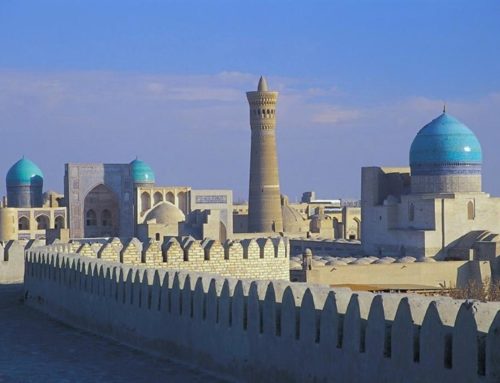1. Top 6 fastest-growing FDI destinations 2024
In an increasingly globalised world, Foreign Direct Investment (FDI) has become a key indicator of economic growth and development. As we step into 2024, it’s more important than ever to understand the dynamics of FDI and identify the fastest-growing destinations that are attracting international investors.
Top Cities
1. Mannheim, Germany:
The leading city for FDI growth in 2023 was the university hub of Mannheim in south-west Germany, where a number of existing investors like pharma giant Roche have decided to expand their presence. The sectors attracting substantial FDI include services, advanced manufacturing, life sciences, light manufacturing, and the food industry. In 2023, about $390 million was pledged to 15 greenfield FDI projects in Mannheim.
2. Craiova, Romania:
Craiova, the city home to carmaker Ford in Romania, had the second highest growth of FDI, largely due to a €125m shopping centre built by NEPI Rockcastle, which attracted several foreign-branded retail stores. The main sectors driving FDI in Craiova are the automotive sector, agriculture, ICT, transport. The city is home to carmaker Ford, and a significant investment was made in a €125m shopping center built by NEPI Rockcastle.
3. Baku, Azerbaijan:
Ranked third was Azerbaijan’s capital Baku, which last year recorded its highest number of FDI projects since 2017. Alongside several logistics FDI projects, Hungary-based Hell Group plans to invest $211m into an aluminium beverage can plant in the city’s Alat Free Economic Zone. The biggest share of the foreign investment is directed to the oil and gas sector. However, the Azerbaijani Government is also trying to diversify the economy and attract foreign investors in agriculture, transportation, tourism, and information/communication technology.
The spread of FDI growth was demonstrated by the diverse make-up of the remaining top 6 global cities. A number of other cities saw significant FDI growth in their respective regions, including:
4. Memphis, USA in North America:
The sectors driving FDI in Memphis include electronics, next-gen cybersecurity technology firms, and carbon capture, utilisation, and storage (CCUS) industry.
5. Cartago, Costa Rica in Latin America and the Caribbean:
The sectors attracting substantial investment include light manufacturing, food and agriculture, advanced manufacturing, digital technologies, life sciences, film industry, logistics
6. Dakar, Senegal in Africa:
The sectors attracting substantial investment include petroleum and natural gas, agribusiness, mining, tourism, manufacturing, and fisheries.
2. Transatlantic Ties: Exploring the Immigration-Driven FDI Boom Between Germany and the Carolinas

In an era of increasing globalisation, the movement of people across borders has become a significant driver of economic growth. This article explores one such instance, where immigration has catalysed a surge in Foreign Direct Investment (FDI) between Germany and the Carolinas. The intertwining of these two regions, seemingly disparate in culture and geography, offers a compelling narrative of how human migration can spur economic dynamism. As we delve into this topic, we’ll uncover the factors that have led to this record-setting FDI, and the transformative impact it has had on both economies.
The key industries benefiting from the Foreign Direct Investment (FDI) trend between Germany and the Carolinas are:
1. Automotive Industry:
Iconic names such as BMW, whose Spartanburg plant catalysed South Carolina’s automotive industry, are present in the region. Other notable German automotive companies include Bosch, Daimler-Mercedes Benz, and Schaeffler.
2. Machinery Businesses:
German machinery businesses arrived in the 1960s to support South Carolina’s textile industry.
3. Software and IT Services:
This sector is one of the leading outbound FDI sectors from Germany.
4. Logistics:
Another significant sector benefiting from the FDI trend.
5. Manufacturing:
Both in terms of inbound FDI to Germany and outbound FDI from Germany, manufacturing plays a crucial role.
These industries have been able to thrive due to the business-friendly regulations, advanced research institutions, strong air connectivity, and historical ties between the regions. The presence of these industries has also helped shape companies’ internationalisation strategies.
Impact on local economy
Foreign Direct Investment (FDI) is often seen as a driver for economic development as it may bring capital, technology, management know-how, jobs, and access to new markets. The impact of FDI on local employment can be significant and multifaceted. Here are some key points based on the literature:
1. Job Creation:
FDI is expected to create new and better-paying jobs. Evidence suggests that foreign-owned firms positively affect employment generation in affiliate firms.
2. Wage Growth:
The gap between wages in domestic firms and foreign firms is larger for high-skilled workers. For firms in upstream sectors (that is, suppliers of MNCs), there is a sizeable increase in jobs but only modest wage growth.
Impact on Domestic Competitors:
The effect on domestic competitors, both in terms of jobs and wages, is muted.
1. Skill Development:
FDI can lead to skill development in the local workforce, as foreign firms often bring advanced technologies and management practices.
2. Indirect Employment:
FDI can also generate indirect employment in local firms that are suppliers to or customers of multinational corporations.
3. Navigating the Storm: The Surge in Asia-Europe Container Trade Amid Capacity Crisis and Skyrocketing Freight Rates
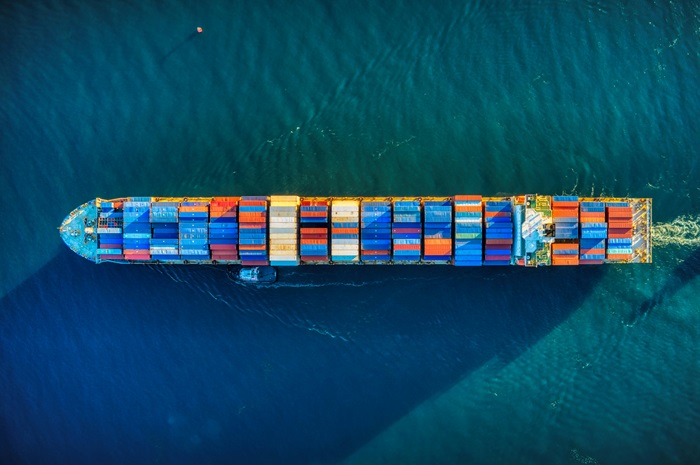
venti views via unsplash
In an era where global trade dynamics are constantly evolving, the Asia-Europe container trade route has emerged as a critical lifeline, connecting two of the world’s most dynamic economic regions. However, recent trends have cast a shadow over this vital trade artery. Forwarders are sounding the alarm about a looming capacity crisis, and freight rates are soaring to unprecedented heights. This article delves into the complexities of these challenges, exploring their origins, implications, and potential solutions. As we navigate through these turbulent waters, understanding these issues is crucial for stakeholders across the supply chain, from shippers and carriers to policymakers and consumers. Join us as we embark on this journey, charting the course of the Asia-Europe container trade in these extraordinary times.
Statistics and trends
1. Asia-Europe Container Trade:
Another 2.6 million twenty-foot equivalent units (TEU) of new capacity is scheduled for delivery by the end of Q2 2024, and many of the deliveries are ultra-large vessels that will be deployed on Asia-Europe services. For the Asia-Europe Westbound trade, MSI forecasts a 2.9% growth in the first half of 2024.
2. Freight Rates:
Freight rates slumped to their lowest level on the 26th of October 2023, when the going rate for a 40-foot container was only 1,342 U.S. dollars. Since then, the global freight rate has gradually increased, hitting over 3,900 U.S. dollars in February 2024, the highest value on record, before decreasing slightly in March and April.
3. Shipping Capacity Crisis:
The Red Sea shipping crisis is disrupting global supply chains and increasing freight costs. With 30% of global container trade transiting through the Suez Canal, the crisis is upending supply chains. It is also increasing shipping costs, causing the prices of some routes — particularly from Asia to Europe — to surge nearly five-fold. The rerouting of ships around Africa’s Cape of Good Hope equates to a roughly 30% increase in transit times, and this implies an approximately 9% reduction in effective global container shipping capacity.
4. Shipping Challenges:
The shortage of shipping containers, a problem that surfaced after the pandemic, is expected to persist in 2024. The shortage began when manufacturers closed their factories during the pandemic causing containers to be held at ports and storage facilities.
Carrier response
Carriers are responding to the capacity crunch in several ways:
1. Rerouting Vessels:
In response to the Red Sea crisis, carriers have rerouted 80-90% of their Far East–Europe vessels south, through the Cape of Good Hope. This adds 30% of the time for shipping to Northern Europe, and more to the eastern Mediterranean.
2. Implementing Additional Charges:
All shipping carriers have implemented additional charges, including contingency and peak season surcharges. These measures are a direct reaction to the complications arising from the avoidance of the Red Sea route.
3. Increasing Capacity:
Carriers are investing their record profits to order new vessels, with around 5.5 million TEUs of new capacity expected by the end of 2024. The availability of container boxes has already increased, and an additional 4 to 5 million new containers are expected in the coming year.
4. Investing in Resilience:
The industry is benefitting from earlier fleet renewal orders arriving in 2024, which will reduce its vulnerability. The crisis marks a shift in the container industry away from the apparent post-Covid normalisation in Q3 2023. It’s a signal for the industry to invest in greater preparedness for future disruptions.
4. Chinese Dumping: EU Ready for a Trade War with China over Cheap Imports
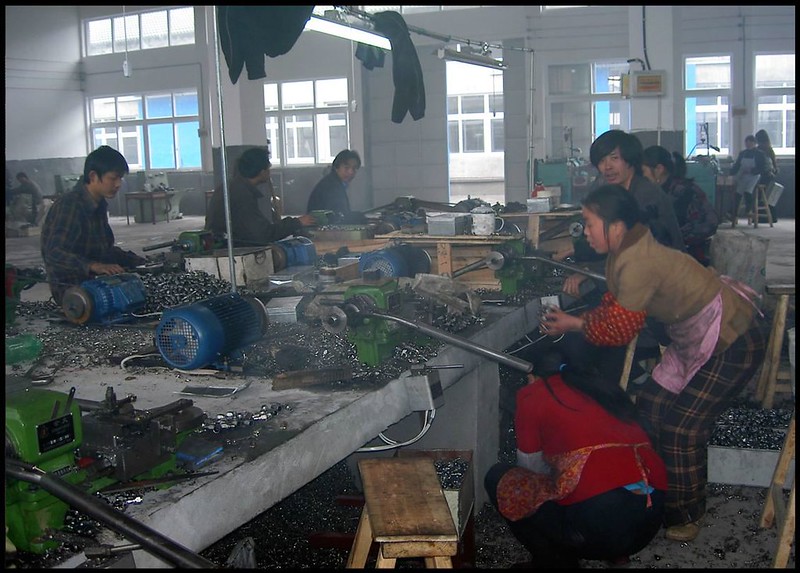
Chinese Spark Plug Factory abarndweller via Flickr CC by 2.0 Deed
In the ever-evolving landscape of global trade, tensions are escalating as the European Union (EU) reaffirms its readiness to engage in a trade war with China. This bold stance comes in response to a surge of inexpensive imports flooding the European market, a situation that has raised concerns among EU member states. This article delves into the complexities of this imminent trade conflict, exploring the reasons behind the EU’s decision, the potential implications for both regions, and the broader impact on the global economy. As we navigate through this intricate web of international trade relations, we aim to shed light on the strategies employed by these economic powerhouses and the potential ripple effects that could reshape the world’s economic order.
Substance
The European Union (EU), a powerful collective of 27 countries, has recently reiterated its readiness to engage in a trade war with China. This decision is primarily driven by the influx of cheap imports from China that are flooding the European market, causing significant concern among EU member states.
China, the world’s second-largest economy after the United States of America, has been accused of ‘dumping’ products into foreign markets. Dumping is a term used in the context of international trade law to describe a situation where a company exports a product to another country at a price lower than the price it normally charges in its home market. The EU argues that this practice is causing harm to its own industries, which are unable to compete with the low prices of Chinese imports.
In response to this situation, the EU has threatened to impose tariffs on Chinese goods. Tariffs are a type of tax imposed on imported goods, and they serve two main purposes: to protect domestic industries from foreign competition and to generate revenue for the government. The proposed tariffs would make Chinese goods more expensive in the European market, thereby levelling the playing field for European companies.
However, this potential trade war is not without its risks. China is a major trading partner for many EU countries, and a trade war could have significant economic repercussions. Furthermore, the imposition of tariffs could lead to a tit-for-tat response from China, leading to an escalating trade conflict that could harm both economies.
In conclusion, while the EU’s readiness to engage in a trade war with China over cheap imports highlights the challenges posed by global trade, it also underscores the need for fair and balanced trade practices. As this situation continues to unfold, it will be crucial to monitor the actions of both the EU and China, as their decisions will have far-reaching implications for the global economy.
Impact
A potential trade war between the European Union (EU) and China could have several significant consequences:
1. Economic Impact:
The most immediate consequence would be the economic impact on both the EU and China. The imposition of tariffs could disrupt trade flows and hurt businesses in both regions. The EU, in particular, could face a recession, which could rekindle economic and political tensions among its member states.
2. Global Growth:
A trade war could limit global growth prospects. The International Monetary Fund (IMF) has warned that uncertainties associated with trade disputes are already negatively affecting growth and global business investment.
3. Retaliatory Measures:
If the EU imposes tariffs on Chinese goods, China could respond with retaliatory tariffs, leading to an escalating trade conflict.
4. Political Ramifications:
Beyond the economic consequences, a trade war could also have deeper political and global ramifications. An escalating trade conflict could sour overall EU-China relations, hindering cooperation on critical issues like climate change and global security.
5. Impact on Global Trade System:
The trade war could pose a threat to the global trade system. The US and Europe worked together to build the liberal global system of governance in place today, and key European economies continue to participate with the US in like-minded economic organisations.
5. Global Trade Growth Set to More Than Double in 2024
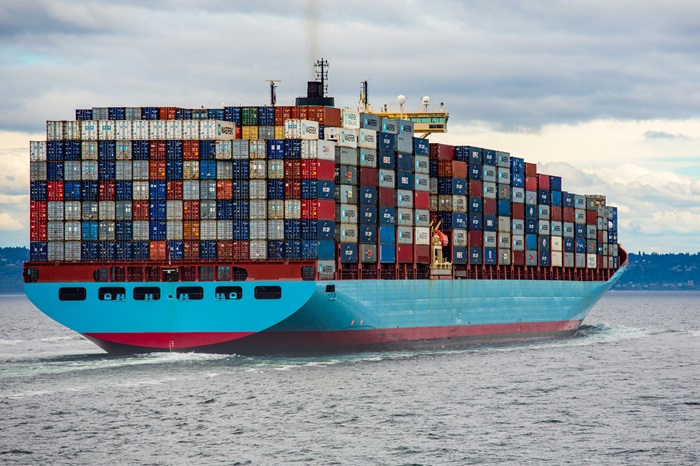
Ian Taylor via Unsplash
In an era marked by rapid technological advancements and shifting geopolitical landscapes, global trade has emerged as a key driver of economic prosperity. This year, we stand on the precipice of a significant milestone. According to recent forecasts, global trade growth is set to more than double, heralding a new chapter in international commerce. This article delves into the factors propelling this surge, the potential implications for various sectors, and the challenges that lie ahead in this dynamic landscape. As we navigate through these unprecedented times, understanding these trends becomes crucial for businesses, policymakers, and individuals alike.
Global trade is poised for a significant rebound in 2024, reversing the downward trend observed in the previous year. According to the World Trade Organization (WTO), the volume of world merchandise trade is projected to increase by 2.6% in 2024, and further to 3.3% in 2025. This comes after a larger-than-expected decline of -1.2% in 2023.
A Challenging Year for Trade in 2023
In 2023, the value of global trade fell by 3% to $31 trillion. The downturn was driven by less demand in developed economies and weaker trade in East Asia and Latin America. Trade in goods dropped by 5%, while trade in services bucked the negative trend, growing by 8%. The sector was fuelled by a nearly 40% surge in tourism and travel-related services.
Developing countries experienced a sharper decline in trade, with their imports and exports falling by 5% and 7%, respectively. Most regions saw negative trade growth in 2023, with the exception of a significant increase in intra-regional trade in Africa.
Signs of Stabilisation and Positive Forecast for 2024
The final quarter of 2023 brought signs of stabilisation, particularly in developing regions, suggesting the beginning of a recovery phase. The forecast for 2024 is broadly positive, with GDP growth expected to continue at around 3%.
The demand for environmental goods, especially electric cars, is set to play a crucial role in driving trade growth. However, logistical challenges such as shipping disruptions in the Red Sea, Black Sea, and Panama Canal cast shadows over the optimistic outlook, threatening to raise costs and disrupt supply chains. Ongoing geopolitical tensions and regional conflicts could also renew volatility in energy and agricultural markets.
In conclusion, while the global trade outlook for 2024 is positive, it is not without its challenges. The resilience and adaptability of the global economy will be tested as it navigates these uncertainties.
6. Xi Jinping in France: Navigating the Crossroads of the Ukraine Crisis and EU-China Trade Disputes
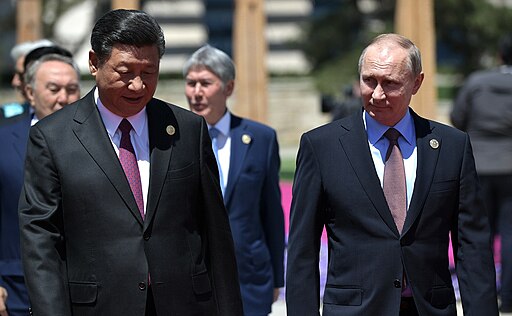
Russian president Vladimir Putin with Chinese Communist Party general secretary & Chinese President Xi Jinping by The Russian Presidential Press and Information Office via Wikimedia Commons CC BY 4.0 DEED
In a world increasingly defined by shifting geopolitical landscapes and intricate diplomatic ties, the arrival of China’s President Xi Jinping in France marks a significant event. Amidst the backdrop of the ongoing Ukraine crisis and the simmering trade row between the European Union and China, Xi’s visit is poised to be a pivotal moment in international relations. This article delves into the complexities of these issues, exploring their implications for global politics, economies, and the future of international cooperation. As we unpack the agenda of Xi’s visit, we invite readers to engage in a nuanced understanding of the challenges and opportunities that lie ahead.
Foreign relations
International Visits: Since assuming leadership on November 15, 2012, Xi Jinping has made 42 international trips to 69 countries.
Relations with the U.S.: Xi has enacted or promoted a more aggressive foreign policy, particularly with regard to China’s relations with the U.S. This was evident in the high-stakes meeting between US President Joe Biden and China’s President Xi Jinping in California.
Middle East Diplomacy: China has regularly hosted summits and dispatched envoys to address tensions in the Middle East, but these initiatives have rarely delivered tangible results.
Elevating Ties: Beijing, under Xi’s leadership, has elevated the way it described ties with 17 countries and territories, most of them from the developing world.
Domestic Impact: Xi’s foreign relations strategies and decisions also have significant domestic implications. For instance, his judgement was seen as tarnished when two of his high-profile appointees – the foreign minister and the defence minister – were removed without explanation.
It’s important to note that the effectiveness and impact of Xi’s foreign policies are subjects of ongoing debate among experts. The geopolitical landscape is complex and constantly changing, and the outcomes of these policies can often take years to fully materialise.
South China Sea Dispute
The South China Sea dispute is a complex and multifaceted issue involving territorial and maritime claims by several countries. Here’s an overview:
Countries Involved: The dispute involves several sovereign states, including the People’s Republic of China (PRC), Taiwan (Republic of China/ROC), Brunei, Malaysia, the Philippines, Vietnam, and Indonesia.
Claims: China, Vietnam, the Philippines, Taiwan, Malaysia, and Brunei all have competing claims over territory in the South China Sea. These claims often include sovereignty over land parcels and their adjacent waters.
Islands and Zones: The disputed territories include island chains such as the Paracels and the Spratlys, which are rich in natural resources and fishing areas.
China’s Stance: China claims the largest portion of territory, demarcated by its so-called “nine-dash line” which extends hundreds of miles south and east from its most southerly province of Hainan. China has backed its expansive claims with island-building and naval patrols.
International Response: The US, while stating it does not take sides in territorial disputes, has sent military ships and planes near disputed islands in what it calls “freedom of navigation” operations. Japan, which has no direct stake in the South China Sea, also provides ships and military equipment to claimants like Vietnam and the Philippines.
Economic Importance: The South China Sea is a major shipping route, with over 21% of global trade, amounting to $3.37 trillion, transiting through these waters in 2016. It is also home to rich fishing grounds and potentially large reserves of natural resources.
Tensions and Conflicts: The failure of Chinese and Southeast Asian leaders to resolve the disputes diplomatically could undermine international laws governing maritime disputes and encourage destabilising arms buildups.
This dispute is a significant issue in international relations, with potential implications for regional stability and global trade. It’s important to note that the situation is fluid and subject to change as diplomatic efforts continue.
7. Dragon in Europe: Xi Jinping visits Europe to avert trade war

Let’s party like it’s 1793: Xi Jinping, the “Chinese Dream” and a return to greatness by sdobie via Flickr CC BY-NC 2.0 DEED
In an era where global dynamics are increasingly influenced by economic powerhouses, the recent visit of Chinese President Xi Jinping to Europe stands as a testament to this reality. This article delves into the intricate dance of diplomacy and negotiation that unfolded during this monumental visit. Amidst the backdrop of escalating trade tensions, the visit was not just a simple tour, but a strategic move aimed at fostering bonhomie and playing hardball to avert a potential trade war. As we navigate through the complexities of this geopolitical chess game, we invite our readers to join us in understanding the implications of this visit on the global stage.
Background
This visit, which took place from May 5-10, 2024, marked President Xi’s first European visit in the past five years. The countries he visited were carefully chosen: France, Serbia, and Hungary. Each of these countries holds a unique position in the geopolitical landscape.
France, the first western country to formally recognize the People’s Republic of China in 1964, holds particular significance in Western Europe. The visit to France also coincided with the sixtieth anniversary of diplomatic relations between China and France. During his visit, President Xi Jinping engaged in bilateral discussions with French President Emmanuel Macron and European Commission President Ursula Von Der Leyen.
Serbia and Hungary, on the other hand, have emerged as influential pro-Russia voices in Europe, each forging comprehensive strategic partnerships with China and actively participating in China’s Belt and Road Initiative (BRI). The visit to Serbia also marked the completion of the twenty-fifth anniversary of the NATO bombing of the Chinese embassy in Serbia in 1999.
This visit was not just about strengthening bilateral ties, but also a strategic move by China to navigate the complex geopolitical dynamics, especially considering the ongoing conflicts such as the Russia-Ukraine war.
In summary, President Xi Jinping’s visit to Europe was a significant event, reflecting China’s nuanced geopolitical strategy and its efforts to foster stronger relations with key European nations. It’s a testament to the intricate dance of diplomacy and negotiation that unfolds on the global stage.
The visit
During President Xi Jinping’s visit to Europe, several significant events and discussions took place:
In France, Xi Jinping met with French President Emmanuel Macron and European Commission President Ursula von der Leyen. The visit to Paris was to mark 60 years since diplomatic relations were established between France and China. The two leaders had less formal discussions at the Tourmalet pass in the Hautes-Pyrénées mountains. The main issues on the agenda during Xi’s visit centered on trade disagreements, and diplomatic initiatives concerning Ukraine.
In Serbia, where China is the biggest single source of inward investment, President Xi Jinping hoped to play up Beijing’s anti-US, anti-NATO agenda. His visit to Belgrade coincided with the 25th anniversary of the bombing of the Chinese embassy in Serbia.
In Hungary, President Xi Jinping underlined the close economic and diplomatic ties between the two countries, including in security cooperation. They also discussed progress on China’s Belt and Road Initiative, which includes a high-speed Budapest-Belgrade rail link.
In addition to strengthening bilateral ties, these visits were strategic moves by China to navigate the complex geopolitical dynamics, especially considering the ongoing conflicts such as the Russia-Ukraine war.
Overall, the visit was a significant event, reflecting China’s nuanced geopolitical strategy and its efforts to foster stronger relations with key European nations. It’s a testament to the intricate dance of diplomacy and negotiation that unfolds on the global stage.
Outcomes
President Xi Jinping’s visit to Europe had several key outcomes:
- Multipolar World Vision: Throughout his visit, President Xi Jinping promoted Beijing’s vision of a multipolar world. This vision seeks a world where the United States is less dominant.
- Trade and Investment Talks: There were extensive discussions on trade and investments. In France, President Emmanuel Macron pressed the Chinese leader to address Beijing’s trade imbalances with the EU.
- Russia-Ukraine Conflict: The ongoing Russia-Ukraine conflict was a significant topic of discussion. Macron urged Xi Jinping to use his influence on Russian President Vladimir Putin to end the war in Ukraine.
- Strengthening Bilateral Relations: The visit was aimed at strengthening bilateral relations with France, Serbia, and Hungary. This year marked the 60th anniversary of diplomatic relations between China and France, and the 75th of those with Hungary.
- Public Diplomacy Efforts: The visit showcased Beijing’s economic and geopolitical ambitions through extensive public diplomacy efforts.
- No Concessions on Trade, Russia-Ukraine: Despite Macron’s pressing, there were no concessions made on trade imbalances or the Russia-Ukraine conflict.
These outcomes reflect the complex dynamics of global politics and the strategic moves made by nations to navigate these complexities. It’s a testament to the intricate dance of diplomacy and negotiation that unfolds on the global stage.




